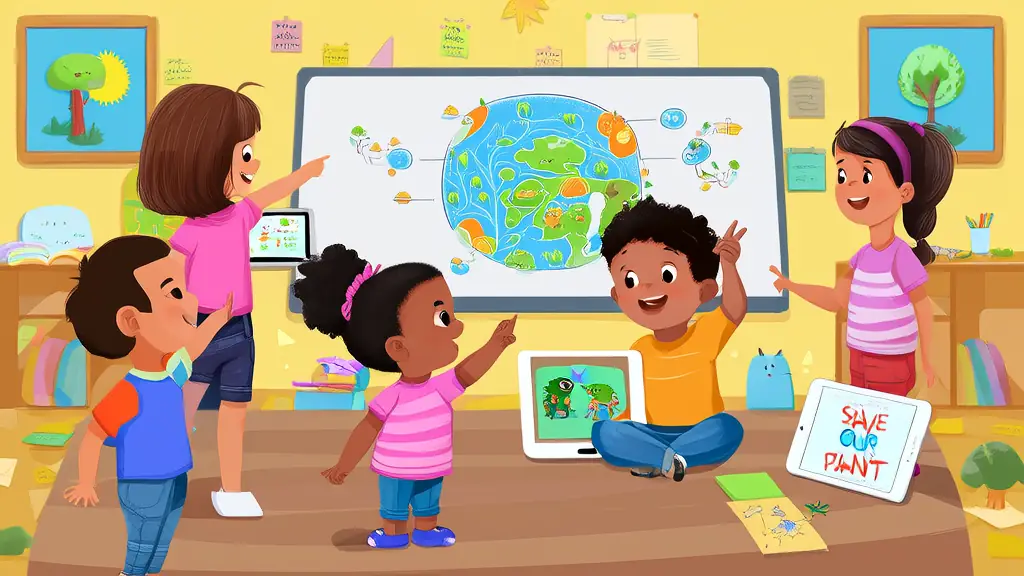
Empowering the Future: Navigating K12 Education in 2025
As we step into the academic year of 2025, the landscape of K12 education is more dynamic and innovative than ever. From cutting-edge teaching methodologies to the integration of advanced educational technologies, the field is evolving at a rapid pace. This blog post aims to provide parents and educators with valuable insights into the latest trends, child development research, and practical tips to support and enhance the learning journey of our young learners. Let's dive in!
Latest Teaching Methodologies and Their Effectiveness
The traditional one-size-fits-all approach to teaching is gradually being replaced by more personalized and student-centered methods. One such methodology gaining traction is Project-Based Learning (PBL). PBL encourages students to engage in real-world projects that require critical thinking, problem-solving, and collaboration. For instance, a science class might work on a project to design and build a sustainable garden, integrating concepts from biology, chemistry, and environmental science.
Another effective method is Blended Learning, which combines face-to-face classroom instruction with online digital media. This hybrid model allows for flexibility and self-paced learning, catering to the diverse needs and learning styles of students. A study by the Clayton Christensen Institute found that blended learning can lead to significant improvements in student engagement and academic performance.
Child Development Insights and Research
Understanding child development is crucial for creating an effective learning environment. Recent research highlights the importance of executive function skills—such as working memory, cognitive flexibility, and self-control—in academic success. These skills are not only essential for academic achievement but also for long-term life success. Teachers and parents can support the development of these skills through activities that promote planning, organization, and self-regulation.
Additionally, the role of social-emotional learning (SEL) has gained prominence. SEL programs focus on developing students' abilities to understand and manage their emotions, set and achieve positive goals, and build healthy relationships. A meta-analysis by the Collaborative for Academic, Social, and Emotional Learning (CASEL) showed that SEL programs can lead to improved academic performance, reduced behavioral problems, and better social skills.
Educational Technology Trends
Technology continues to play a transformative role in K12 education. Artificial Intelligence (AI) is being used to personalize learning experiences, providing tailored content and feedback to individual students. AI-powered tools can analyze student data to identify areas where they need additional support and offer targeted interventions. For example, platforms like DreamBox Learning use AI to adapt math lessons based on each student's progress and understanding.
Virtual Reality (VR) and Augmented Reality (AR) are also making waves in the classroom. These immersive technologies can bring abstract concepts to life, enhancing engagement and comprehension. A biology class, for instance, might use VR to take a virtual tour of the human body, allowing students to explore the intricacies of anatomy in a highly interactive and memorable way.
Practical Tips for Parents and Teachers
For parents:
- Stay Informed: Keep up with the latest educational trends and research. Attend parent-teacher conferences and school events to stay connected with your child's learning journey.
- Support Executive Function Skills: Encourage your child to plan and organize their tasks, set goals, and reflect on their progress. Simple activities like creating a daily schedule or breaking down large assignments into smaller steps can be very beneficial.
- Promote SEL: Engage in conversations about emotions and feelings. Teach your child to recognize and manage their emotions, and encourage empathy and kindness towards others.
For teachers:
- Embrace New Technologies: Integrate AI, VR, and AR into your lessons to create engaging and personalized learning experiences. Explore professional development opportunities to stay updated on the latest edtech tools.
- Foster a Growth Mindset: Encourage students to view challenges as opportunities for growth. Provide constructive feedback and celebrate their efforts and progress, not just their achievements.
- Create a Supportive Environment: Build a classroom culture that values respect, inclusivity, and open communication. Implement SEL practices to help students develop strong social and emotional skills.
Success Stories and Case Studies
One inspiring success story comes from the High Tech High School in San Diego, California. The school has fully embraced PBL, and its students have consistently outperformed their peers in standardized tests. A notable project involved students designing and building a solar-powered car, which not only taught them engineering and physics but also instilled a sense of community and teamwork.
Another case study is the New Harmony School in Indiana, which has integrated SEL into its curriculum. The school reported a 30% reduction in disciplinary incidents and a 20% increase in student attendance after implementing a comprehensive SEL program. Students and teachers alike have reported a more positive and supportive school climate.
Conclusion
The future of K12 education is bright and full of possibilities. By embracing the latest teaching methodologies, staying informed about child development, leveraging educational technology, and supporting both academic and social-emotional growth, we can empower our children to become lifelong learners and responsible citizens. Let's continue to collaborate and innovate to ensure that every child has the opportunity to thrive and succeed.
Join us in this exciting journey, and let's make a difference in the lives of our young learners. Together, we can shape a brighter future for all.